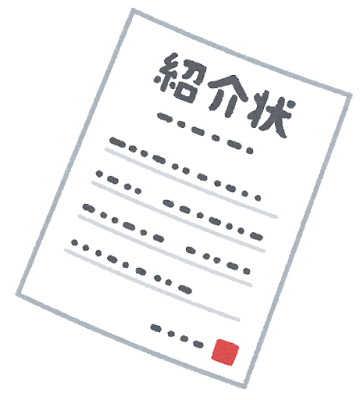整形外科における痛風、運動器の腫瘍、運動器の先天異常などに関する会話例と英語フレーズ
整形外科では、痛風(Gout)、運動器の腫瘍(Musculoskeletal Tumors)、および**運動器の先天性疾患(Congenital Musculoskeletal Disorders)**が診察されることがあります。痛風は、尿酸結晶が関節に蓄積し、激しい痛みや炎症を引き起こす疾患です。運動器の腫瘍は、筋肉や骨にできる腫瘍で、良性から悪性まで幅広い形態があります。運動器の先天性疾患は、出生時から存在する骨や筋肉、関節の異常を指します。
この記事では、これらの疾患に関連する患者との診察を想定し、特有の会話例と重要なフレーズを学びます。
患者の設定
- 名前: Taro Yamamoto (48歳、男性)
- 職業: 会社員
- 主な症状: 左足の親指の激しい痛み、腫れ。過去に痛風の診断を受けている。最近、膝にしこりを感じる。
- 既往歴: 数年前に痛風と診断され、現在は治療中。最近、膝に違和感がある。
- 生活習慣: 運動はあまりしておらず、食事は尿酸値が高いと指摘されている。
診察の流れと会話例
1. 初診での問診と症状の確認
Doctor: “Good afternoon, Mr. Yamamoto. I understand you’ve been having some pain and swelling in your big toe, along with a lump in your knee. Can you tell me more about how long you’ve had these symptoms and if the pain in your toe is similar to previous episodes of gout?”
日本語訳: 「こんにちは、山本さん。親指の痛みや腫れ、膝のしこりがあるとお聞きしましたが、症状はどのくらい続いていて、親指の痛みは以前の痛風の症状と似ていますか?」
Patient: “The pain in my toe started a few days ago, and it feels like the gout attacks I’ve had before. The lump in my knee is new, though, and it’s not painful, but I’m worried about it.”
日本語訳: 「親指の痛みは数日前から始まり、これまでの痛風の発作と同じような感じです。膝のしこりは初めてで、痛くはないですが、少し心配です。」
Doctor: “I see. So, the pain in your big toe feels like a gout attack, but the lump in your knee is new and not painful. Have you noticed any changes in the size of the lump or any other symptoms?”
日本語訳: 「なるほど。親指の痛みは痛風発作のようですが、膝のしこりは新しく、痛みはないんですね。しこりの大きさに変化があったり、他の症状が出てきたりしましたか?」
Patient: “No, it hasn’t changed in size, but I’m concerned because I’ve never had anything like this before.”
日本語訳: 「いいえ、大きさの変化はないですが、今までこんなことはなかったので心配です。」
2. 痛風と腫瘍のリスクファクターの説明
Doctor: “It sounds like you’re having another gout attack in your toe, which is common in people with elevated uric acid levels. As for the lump in your knee, we’ll need to examine it further to rule out any issues, such as a benign tumor or other soft tissue abnormalities. Have you been monitoring your uric acid levels and following the recommended diet?”
日本語訳: 「親指の症状は、再び痛風発作が起きているようですね。これは尿酸値が高い方によく見られる症状です。膝のしこりについては、良性腫瘍やその他の軟部組織の異常を除外するために、もう少し詳しく調べる必要があります。尿酸値を監視し、指示された食事療法を守っていますか?」
Patient: “I’ve been trying, but it’s difficult to stick to the diet all the time.”
日本語訳: 「努力はしていますが、食事療法を常に守るのは難しいです。」
3. 検査の必要性と診断の説明
Doctor: “To assess your gout and the lump in your knee, we’ll need to do some tests. For the gout, we’ll start with a blood test to check your uric acid levels. For the lump, we may need to do an X-ray or an MRI to get a better look at the soft tissues. We’ll also perform a physical examination to assess the size and consistency of the lump.”
日本語訳: 「痛風と膝のしこりを評価するために、いくつかの検査を行う必要があります。痛風に関しては、まず血液検査で尿酸値を確認します。しこりに関しては、レントゲンやMRIを行い、軟部組織を詳しく調べることが必要かもしれません。また、身体検査でしこりの大きさや硬さも評価します。」
Patient: “Will the tests show if the lump is cancerous?”
日本語訳: 「検査で、このしこりががんかどうか分かりますか?」
Doctor: “The X-ray and MRI can help us determine if the lump is benign or if there’s any reason for concern. If necessary, we may need to do a biopsy to analyze the tissue, but most lumps like this are benign.”
日本語訳: 「レントゲンやMRIで、そのしこりが良性かどうか、また懸念すべきかどうかを判断するのに役立ちます。必要であれば、生検を行い組織を分析することも考えられますが、このようなしこりの多くは良性です。」
4. 診断結果と治療法の説明
Doctor: “If the tests confirm another gout attack, we’ll focus on reducing your uric acid levels with medications and adjusting your diet to help prevent future attacks. As for the lump, if it turns out to be benign, we’ll monitor it to make sure it doesn’t grow. If we find any concerning signs, we may need to consider further treatment, including surgery.”
日本語訳: 「もし検査で再び痛風発作が確認された場合、薬物治療と食事療法の調整を行い、今後の発作を防ぐことに焦点を当てます。しこりが良性であることが確認された場合、そのまま経過観察し、大きくならないか確認していきます。懸念すべき兆候が見つかった場合は、手術などの治療を検討することになります。」
Patient: “How long will I need to take medication for gout?”
日本語訳: 「痛風の薬はどれくらいの期間飲み続ける必要がありますか?」
Doctor: “For gout, long-term management is usually necessary to control uric acid levels and prevent future attacks. We’ll monitor your progress with regular blood tests and adjust the medication as needed.”
日本語訳: 「痛風の場合、尿酸値をコントロールし、発作を防ぐために長期的な管理が必要です。定期的に血液検査で進行状況を確認し、必要に応じて薬を調整します。」
5. 症状管理と予防策
Doctor: “To help manage your gout, it’s important to avoid foods that are high in purines, such as red meat and seafood, and to drink plenty of water. Staying active with low-impact exercises like walking can also help maintain your joint health. As for the lump, we’ll keep monitoring it and recommend follow-up visits to ensure there are no changes.”
日本語訳: 「痛風の管理には、プリン体が多い赤身肉やシーフードを避け、水分を十分に摂ることが重要です。また、ウォーキングなどの低衝撃の運動を行うことで、関節の健康を維持するのにも役立ちます。しこりについては、経過観察を続け、変化がないか定期的な診察をお勧めします。」
Patient: “What kind of exercises should I do to avoid putting too much stress on my joints?”
日本語訳: 「関節に負担をかけすぎないために、どんな運動をすればいいですか?」
Doctor: “You can start with gentle exercises like walking or swimming, which are easier on the joints. It’s also important to maintain a healthy weight, as excess weight can increase stress on your joints and contribute to gout flare-ups.”
日本語訳: 「ウォーキングや水泳のような軽い運動から始めるのが良いでしょう。これらは関節に負担が少ないです。また、健康的な体重を維持することも重要で、体重が増えすぎると関節に負担がかかり、痛風の発作が起こりやすくなります。」
学習ポイント
- 症状の確認: 痛風や腫瘍に関連する症状を確認するためのフレーズを学びましょう。例: “Are you experiencing any pain, swelling, or lumps in your joints, particularly in your toes, knees, or other areas?“(関節、特に親指や膝に痛みや腫れ、しこりを感じますか?)
- 検査の説明: 痛風や腫瘍の診断に必要な検査を説明するフレーズを学びます。例: “We’ll perform a blood test to check your uric acid levels and an X-ray or MRI to examine the lump in your knee.“(尿酸値を確認するために血液検査を行い、膝のしこりを調べるためにレントゲンやMRIを行います。)
- 治療法の説明: 痛風や腫瘍に対する治療法を説明するフレーズを学びます。例: “For gout, we recommend medications to reduce uric acid levels, along with dietary changes to prevent future attacks.“(痛風には、尿酸値を下げる薬と、今後の発作を防ぐための食事療法をお勧めします。)
- リハビリと予防策: 痛風の管理や運動器腫瘍の再発防止のためのアドバイスを学びます。例: “Low-impact exercises like walking or swimming can help reduce stress on your joints, and maintaining a healthy weight will also reduce the risk of future gout attacks.“(ウォーキングや水泳などの低衝撃の運動が、関節への負担を減らすのに役立ちます。また、健康的な体重を維持することで、今後の痛風発作のリスクを減らせます。)
関連キーワード: 痛風, 運動器の腫瘍, 骨腫瘍, 良性腫瘍, 生検, レントゲン, MRI, プリン体, 英語会話例, 外国人対応


